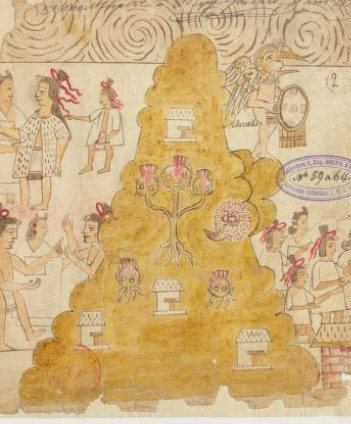Azcatitlan (Azca7)
This compound glyph represents the place name Azcatitlan. It shows a bird's eye view of an ant *(azcatl) in the middle of a circle that may be filled with sand. Overlapping with this circle of dots, on its lower left side, is a curving set of teeth that provides the phonetics for the locative (-titlan) ("in," "between," etc.).
Stephanie Wood
As Gordon Whittaker (2021, 102) has noticed, when the locative is -titlan, it is a full set of teeth (rather than just the two, upper, front teeth) that provides the visual, as is the case here, for the phonogram.
Stephanie Wood
Ascatitla
Azcatitlan
Stephanie Wood
post-1550, possibly from the early seventeenth century
Jeff Haskett-Wood
nombres de lugares

azca(tl), ant, https://nahuatl.wired-humanities.org/content/azcatl
tlan(tli), teeth, https://nahuatl.wired-humanities.org/content/tlantli
-titlan (locative suffix), in, between, https://nahuatl.wired-humanities.org/content/titlan
The Codex Azcatitlan is also known as the Histoire mexicaine, [Manuscrit] Mexicain 59–64. It is housed in the Bibliothèque Nationale de France, and hosted on line by the World Digital Library and the Library of Congress.
https://www.loc.gov/resource/gdcwdl.wdl_15280/?sp=7&st=image
The Library of Congress is “unaware of any copyright or other restrictions in the World Digital Library Collection.” But please cite Bibliothèque Nationale de France and this Visual Lexicon of Aztec Hieroglyphs.


